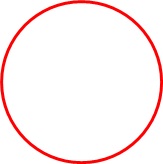In this issue:
![]()
This is an icon I recently envisioned of the central figures in our lineage of Soto Zen. I assembled the components on the computer, then uploaded the resultant graphic image and had it printed as a 12x18” poster. I then decoupaged that onto a sheet of thin hardboard for hanging.
The elements of this icon: the empty (or immaculate) circle at the top represents the Eternal; the sitting Buddha just below the empty circle represents Shakyamuni Buddha; the three portraits in a row represent (from left to right) Great Master Keizan, Rev. Master Jiyu Kennet, and Great Master Dogen. The red line running through them symbolizes the “bloodline of the Buddhas”—the compassion and wisdom that flow from the Eternal, through the Buddhas and Ancestors, and, ultimately, through ourselves when we train in meditation and the Precepts.
In a series of articles in this newsletter I will discuss what these elements mean to me as a trainee in the Serene Reflection Meditation tradition.
The Eternal

In Asian art and iconography the empty circle is used to represent the Absolute, the Transcendent, the Eternal, the Cosmic Buddha, the Source, complete Enlightenment, the Immaculacy of Emptiness (Sunyata)…. In the Scripture of Great Wisdom (Heart Sutra), it is described as “void, unstained, and Pure,” and as “Wisdom Great.” Dogen, in Rules for Meditation, uses “Truth” and “Treasure House” and the undifferentiated “Buddha Mind” that is beyond the opposites. In Roar of the Tigress-I, Rev. Master Jiyu-Kennett puts it:
In the Udana Scripture [the Buddha] says very clearly, “O monks, there is an Unborn, Undying, Unchanging, Uncreated.” This is what He found in meditation and which gave Him His enlightenment. In other words, He found That Which Is. What the Christians call “God” and Mohammedans call “Allah”, the Buddhists call variably: That Which Is, the Lord of the House, the Cosmic Buddha, the Eternal, Amida Buddha, the Immaculacy of Emptiness, Vairocana Buddha, the Unborn, etc. The terms we use for It don’t really matter: they’re just labels, just concepts.
The empty circle can also be viewed as a mirror representing the Dharmakaya, or Truth Body, having the aspects of purity (a mirror is clear of pollution) and wisdom (a mirror reflects all phenomena without distinction).
Although many terms can be used, in short, the empty circle represents the spiritual Reality that permeates the universe and includes all things without reference to time or space. That is why an empty circle is such an effective representation of this Reality: it cannot be “pinned down” to an image that we project onto it; it does not allow us to “create God in our own image.” Its very emptiness allows it to contain all things, free of our limited concepts of what is pure and holy, which is why it is worthy of our emulation (there is a saying in the Zen tradition that “all-acceptance is the key to the gateless gate of Zen”). As Rev. Master Jiyu says, “We always place upon ourselves our own personal concept of God or the Eternal—something that is much better than us. But we usually stop short at Something that just is there, and is such perfect Love It can tolerate everybody in the world.”
No one is unworthy of this perfect love, however much their ego might tell them they are. A teacup may be chipped and cracked, but if seawater is poured into it then it contains the essence of the ocean without itself being the ocean. However flawed and imperfect we may be, we hold the essence of the Eternal—the Buddha Nature—within ourselves. We may pollute It with actions of body, speech, and mind that cause suffering, and we can at any time clarify It by ceasing them and instead practicing the Four Wisdoms of charity, tenderness, benevolence, and sympathy. We have to start from where we are, flaws and all, and allow our training to do its work of conversion by getting our self out of the way by our training.
The etymological root of “religion” is religio, to “reconnect,” and the underlying purpose of religion—the real reason for its rites and rituals and forms and scriptures—is to help us reconnect to this true and good Source of all things. Perhaps “reconnect” is not entirely accurate, since, in reality, we were never separate from It in the first place; “realization” may be more to the point, as in “turning about in the seat of deepest consciousness” and realizing our True Nature, our Oneness with the Eternal. This “turning about” is accomplished by our training in pure meditation and mindfulness of the Precepts. It is learning how to truly love selflessly.
The iconographic representations of Buddhas and Bodhisattvas, as well as revered religious figures in all traditions, often include a circular halo or “nimbus” of pure white behind the head of the person to indicate their experience of the Eternal. It is as if throughout history humankind has recognized that there are people who have trained themselves to such a degree of selflessness that they have opened a portal, as it were, to the Transcendent and have revealed It to us. Their example and teachings are inspirational guides for us on our own journey home to the Eternal, and our gratitude is why we reverence them.
